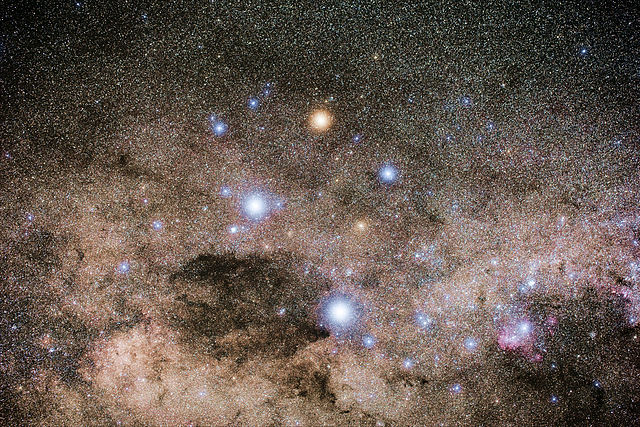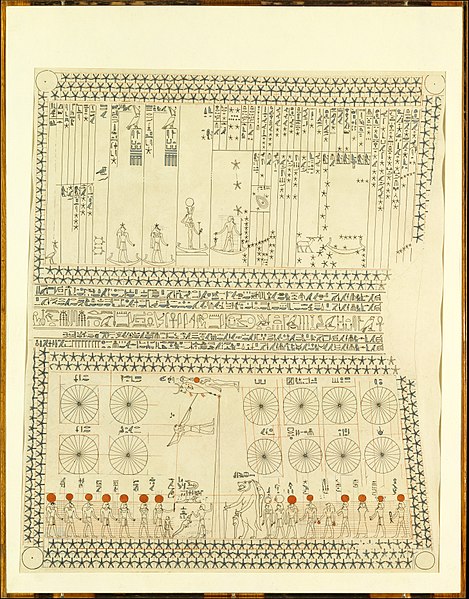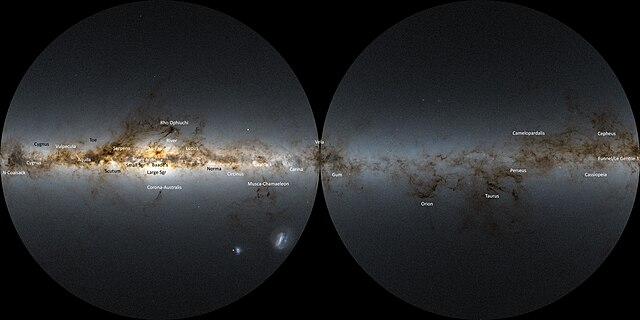Crux is a constellation of the southern sky that is centred on four bright stars in a cross-shaped asterism commonly known as the Southern Cross. It lies on the southern end of the Milky Way's visible band. The name Crux is Latin for cross. Even though it is the smallest of all 88 modern constellations, Crux is among the most easily distinguished as its four main stars each have an apparent visual magnitude brighter than +2.8. It has attained a high level of cultural significance in many Southern Hemisphere states and nations.
Southern Cross from New Zealand
Deep exposure of Crux, Coalsack Nebula, and IC 2944
The constellation Crux as it can be seen by the naked eye
Crux with clouds, from Cape Town
A constellation is an area on the celestial sphere in which a group of visible stars forms a perceived pattern or outline, typically representing an animal, mythological subject, or inanimate object.
Babylonian tablet recording Halley's Comet in 164 BC
Egyptian star chart and decanal clock, from the ceiling of Senenmut's tomb, c. 1473 BC
The Milky Way as seen by Gaia, with prominent dark features labeled in white, as well as prominent star clouds labeled in black.
Inca dark cloud constellations in the Mayu (Celestial River), also known as the Milky Way. The Southern Cross is above Yutu, while the eyes of the Llama are Alpha Centauri and Beta Centauri.








